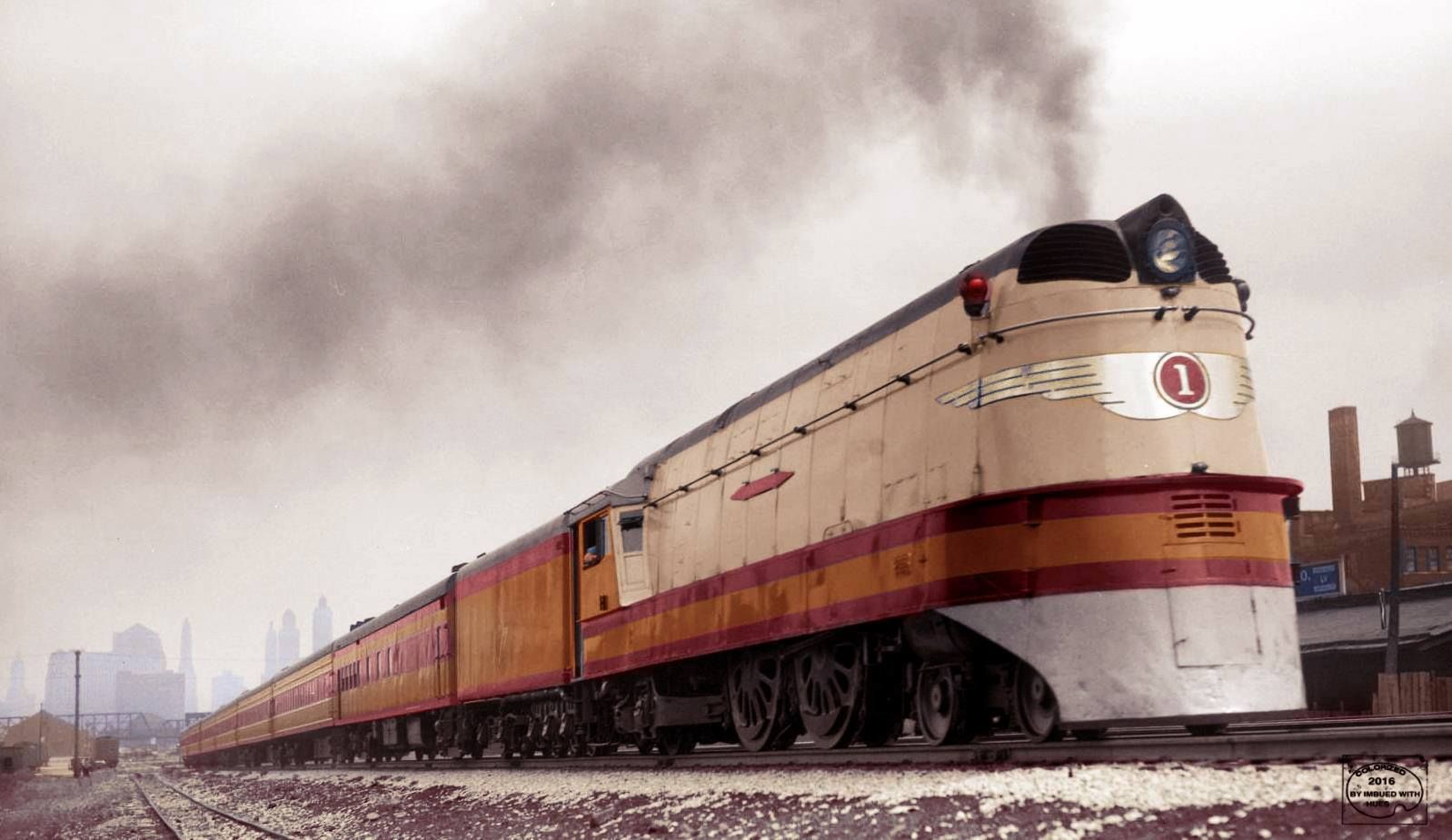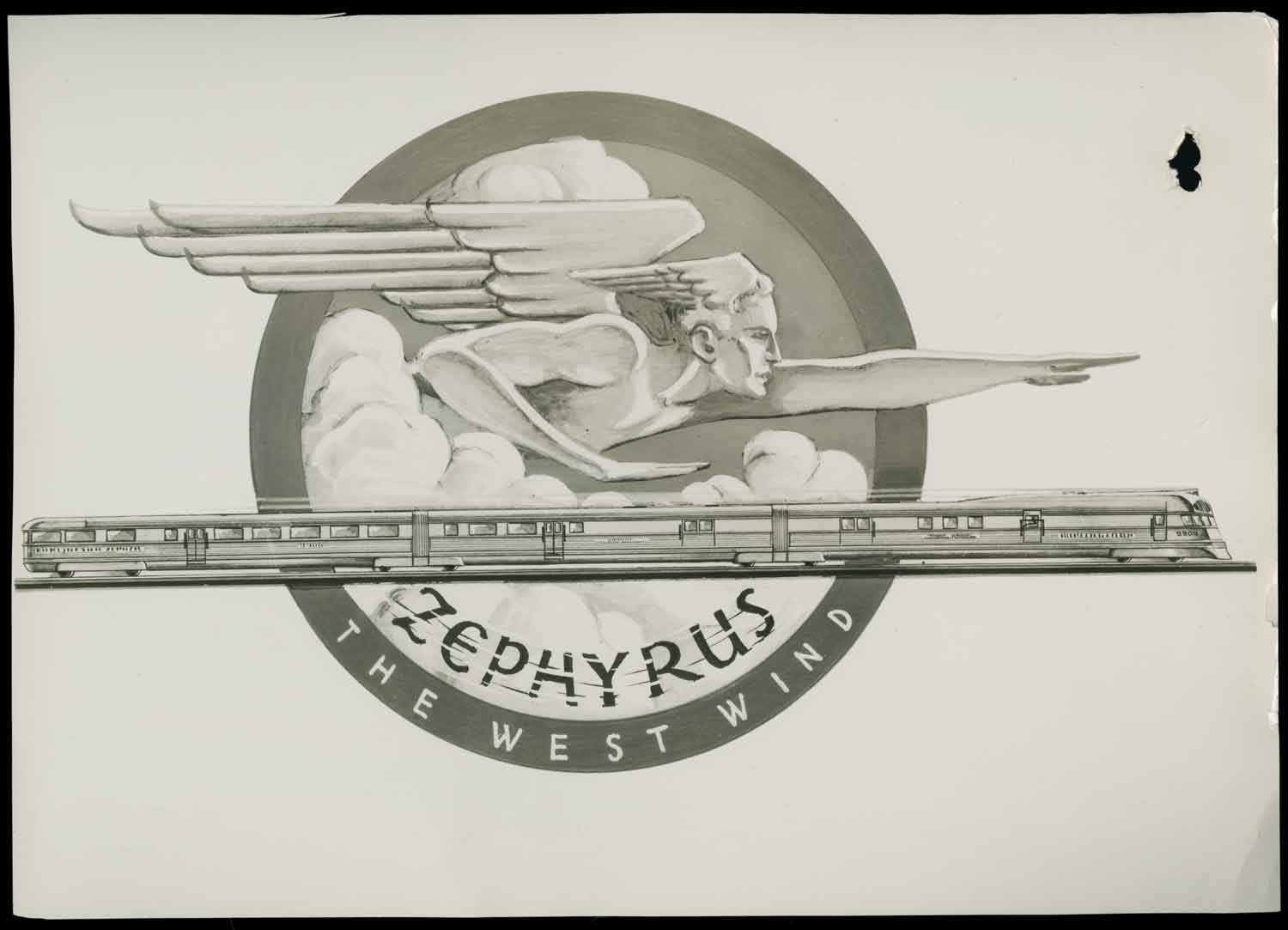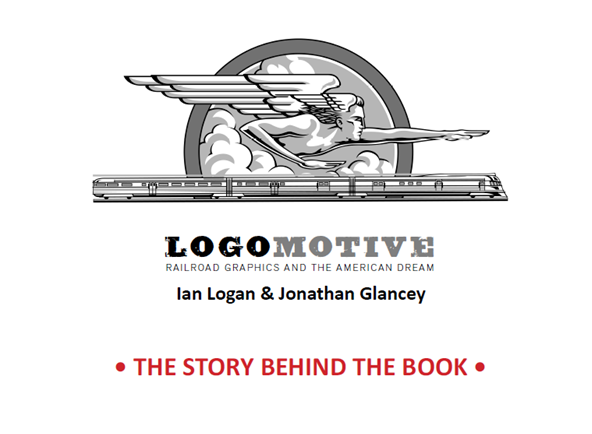
You Can Do It, America!
In a rousing talk given recently in Madison, Wisconsin, Ian Logan and Jonathan Glancey recalled the triumphs of American railroad engineering and design in the 1930s. American railroads absolutely had it all, they told their audience. ‘We hope they’ll do it again in the future. Come on, you can do it, America!’
The Milwaukee Road’s Class-A Hiawatha 4-4-2 streamlined locomotives cruised at more than 100 m.p.h. Built between 1935 and 1937, they pulled trains that were not only fast – sprinting between Chicago and the Twin Cities – but offered a standard of service and comfort that is hard to imagine today. With their Art Deco cocktail bars and restaurants, sleeping cars, observation cars and, latterly, sky-top lounges, America’s elite trains of this era were every bit as epic as the landscapes they scythed paths through.
Luxury Rail Travel was just one of the topics Ian Logan and Jonathan Glancey covered in their talk at the Center for Railroad Photography & Art in Madison, Wisconsin, now live on YouTube. They also enthused about Growing Up in the Steam Age, Station Styles, Railroad Graphics and Phoenix Arising, or how the romance of rail travel has begun to revive in the Big Country. Which is where they got carried away by their enthusiasm for the future. ‘Come on,’ they said. ‘You can do it, America!’
Railroad photography as art
We first became aware of the Center for Railroad Photography & Art when our author Ian Logan showed us a copy of Railroad Heritage, a journal he subscribes to which is published by the Center. Rail enthusiasts mostly get their kicks from trainspotting and technical details, not art and composition, and as railway publishers we have seen a lot of forgettable railway photographs, so it was a revelation to discover the genuinely beautiful photography laid out in the pages of Railroad Heritage, reminiscent of O. Winston Link’s classic Steam, Steel & Stars about the last days of steam on the Norfolk & Western Railway.
When Ian Logan and Jonathan Glancey’s new book Logomotive: Railroad Graphics and the American Dream was printed, our publicist Katrina Power sent an advance copy to Kevin P. Keefe, former editor of Trains magazine, who reviewed it in favourable terms for Railroad Heritage. Subsequently we approached him to ask if the Center might help organize a travelling exhibition of railroad graphics. Maybe when they’d cleared the backlog of projects that had built up during lockdown, he said, but that wouldn’t be any time soon. But would your authors be interested in giving a presentation at the Center’s next annual conference? This would be an all-day event held on Saturday 10th April, entitled Virtual Conversations 2021.
Ian and Jonathan said yes. The film producer and sound engineer Phil Benson put together a PowerPoint presentation for us and on 10th April we were live. Kevin Keefe kindly introduced our talk.
It takes a foreigner
‘Logomotive made a real strong impression me,’ he said, ‘and a surprising impression at that several months ago when I reviewed it for the Center’s Railroad Heritage journal. I say surprising because here was a subject I figured had been done to death. Nothing likely is more familiar to the people attending this conference today than the logos and iconography of North American railroads: the Pennsy keystone, the Santa Fe warbonnet, the Wabash flag, even Penn Central’s worms, and many, many more, all of them old familiar friends. So what can we learn that’s new? Well, plenty, it turns out. Ian and Jonathan infuse the subject with enthusiasm and passion thanks to their accomplishments in the fields of graphics and design. They transcend merely being fans. And of course they also bring a fresh perspective from 4,000 miles across the pond.’

A sense of optimism
At the end of their talk Ian and Jonathan flashed up a piece of artwork drawn in 1934 to promote the Burlington Route’s revolutionary new Zephyr three-car diesel express.
‘There we are, pulling the book together graphically with this image of the streamliners,’ said Jonathan Glancey. ‘A sense of optimism at the end. That’s the point, isn’t it, Ian? Look at that! It’s got everything: destiny, power, speed, glamour. American railroads absolutely had it all. We hope they’ll do it again in the future.’
‘You’ve got the engineering to do it. You’ve got everything: the style, the money. Just do it!’ chimed in Ian. ‘The Chinese built 15,000 miles of high-speed railways in the last few years. Come on America, you can do it!’
The Burlington Zephyr artwork was reproduced in Ian and Jonathan’s chapter on Streamline Style and redrawn by the illustrator Neil Gower, known for his Bill Bryson book designs, for the cover of Logomotive.

Streaming now
Ian and Jonathan’s talk is now live on YouTube under the heading The Story Behind the Book. We owe a big debt of gratitude to Scott Lothes who chaired the conference, Hailey Paige who coaxed and coached us through practice sessions and Kevin Keefe who argued a British point of view was worth listening to.
Interpreting the past, foreshadowing the future?
To see the important work this go-ahead railroad organization is doing in Madison, Wisconsin to preserve, digitize and communicate the history of the railroads in America, visit the Center for Railroad Photography & Art. Maybe they can wean Americans out of their automobiles and planes and back on to the rails.
Celebrating the iconography
Ian Logan and Jonathan Glancey have produced ‘an authoritative overview of railroad design’, writes Kevin Keefe in Railroad Heritage. Their book Logomotive: Railroad Graphics and the American Dream is available on both sides of the pond. In the US you can order it direct from our Chicago warehouse or visit our US website. In the UK, just click here.
More articles…
From the Bookshelf ⋅ Red Carpet at Grand Central ⋅ For the Love of Logos

